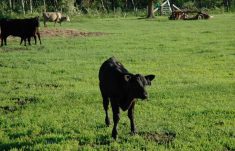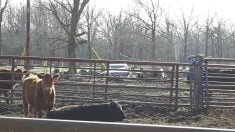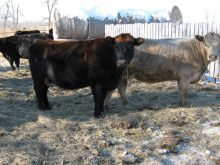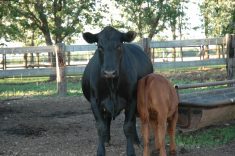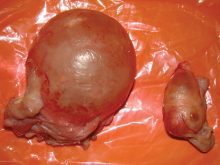Spring calves can be creep-fed in several ways, from home-made grain rations to well-balanced commercial feed pellets. All can be directed into a traditional creep feeding program, which can add extra saleable weaning weight by fall. Unfortunately, this premium growth may not always be nutritionally necessary or profitable. A little homework is necessary to calculate the value of creep feeding spring calves in 2022.
I recommend that producers assess the body condition of their cows throughout the pasture season and determine how well they are milking and how the spring calves are growing. They should also look at the condition of pastures. Good milk and high-quality pasture often diminish the benefits of good creep feeding programs.
Many people put out creep feeders in late summer, when cows’ decreasing milk production meets only 50 per cent of the growing calf’s requirements and pastures are maturing. In my experience, calves nose at the creep feed for a few weeks (starting around one kilogram per head per day) and then consumption rapidly increases until weaning, when they are consuming up to three kg. Other people put creep feeders out much earlier, as was the case last summer when drought-stricken pastures were not able to support milk production and the grass had poor feed value for calves.
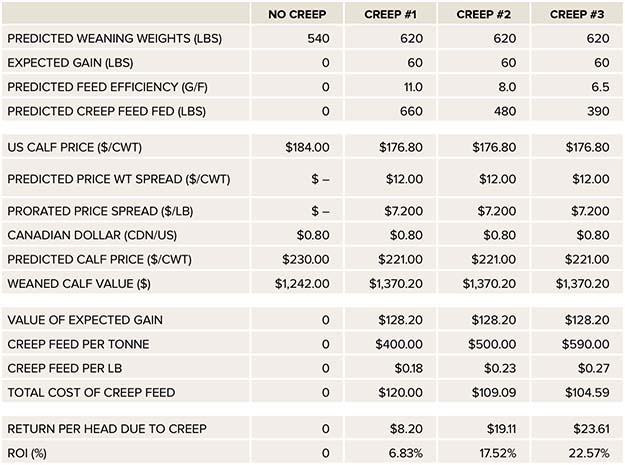
Dried-out pastures make any creep feeding program more of a nutritional necessity, but given an average year with timely rainfalls, the profitability of creep feeding will largely determine the use of supplemental rations.
Read Also
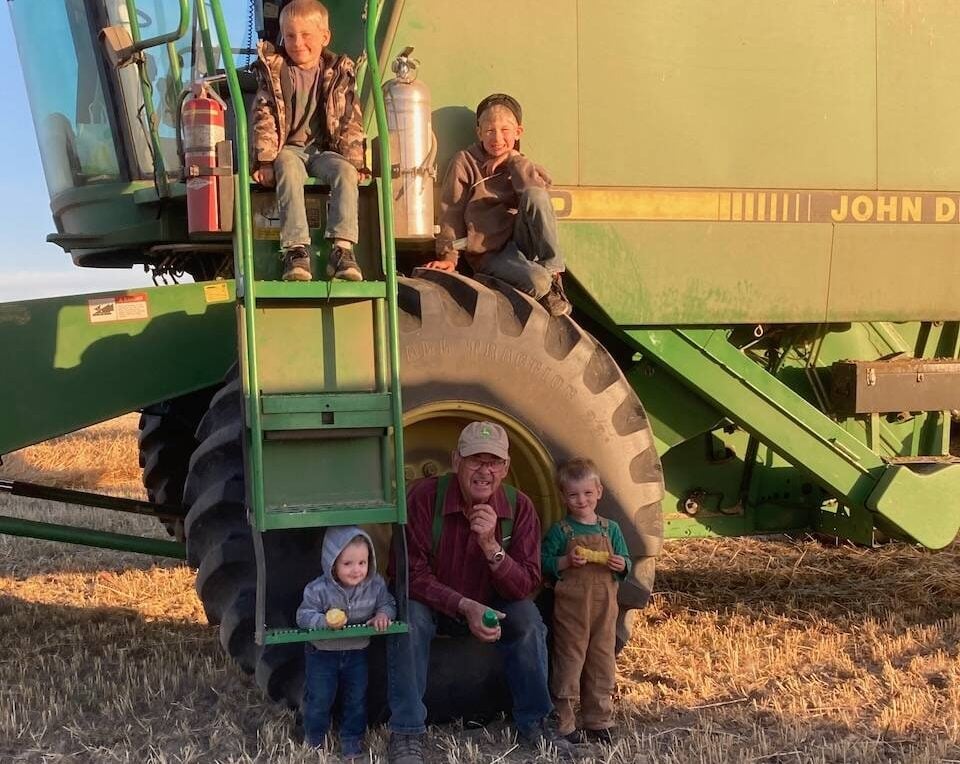
Harvest wraps up and fall work begins
At the Eppich famly ranch in western Saskatchewan, the fall harvest was successful with few breakdowns, cows and calves have been sorted and a new tractor has arrived
A look at feeding costs
I have calculated the economics of creep feeding calves for 2022, which targets 60 pounds of extra weaning weight gain in a 100-day creep feeding program. I compare it to that of a non-creep-fed animal. Predicted feeder prices this fall and current feed prices are the two main factors that determine the profitability of creep-feeding.
I have talked to several cow-calf operators and there is a consensus that an autumn calf price of $2.30 per lb. and a home-made creep ration of barley, DDGS and cattle mineral, drawn up for about $500 per tonne, puts creep feeding in profitable territory but pencils out at a nominal profit of about $20 per calf. For some, it makes creep-feeding hardly worth the effort.
It is generally assumed that creep feeding is more valuable when calf prices are relatively high, as they are in 2022. However, the truth is that higher calf prices mean greater volatility and market discounts as calves increase in weight. In my example, the price per hundredweight discount from 500 to 600 lb. feeder cattle was US$12 per cwt, which results in a prorated 60 lb. rate of about $7.20 per cwt. If this discount was narrower by only a few dollars, more profit would be realized.
Aside from current calf prices and market discounts, one of the best ways to improve the value of creep feeding is to improve creep feeds. As a beef nutritionist, I have entered in this spreadsheet three different creep rations and estimated their feed efficiencies (re: X lb. feed/1.0 weight gain), namely a cow-calf screening pellet at $400 per tonne (FE=11.00), a homemade diet (as mentioned above) at $500 per tonne (FE=8.00) and a commercial 14 per cent calf creep pellet at $590 per tonne (FE = 6.5).
Assuming the same predicted autumn calf price of $2.30 per lb., and $12 per cwt. market discount, profit per calf due to creep feeding was $ 8.20, $19.11 and $ 23.61, respectively. While all rations are profitable, they are still narrow in scope so is it worthwhile? It is interesting that the more expensive creep diet is the most profitable due to its highest feed efficiency.
A friend of mine who runs a 400-head cow-calf operation doesn’t mind that the profit due to creep-feeding his calves is near the break-even point in 2022. That’s because he retains most spring calves until February of the following year and finds creep feeding during late summer gives him the best opportunity of a trouble-free weaning season and putting calves on backgrounding diets with ease.
Peter Vitti is an independent livestock nutritionist and consultant based in Winnipeg. To reach him call 204-254-7497 or by email at [email protected].




